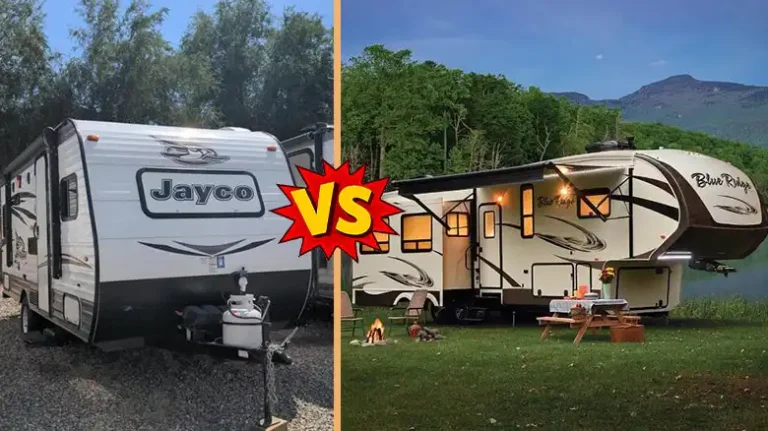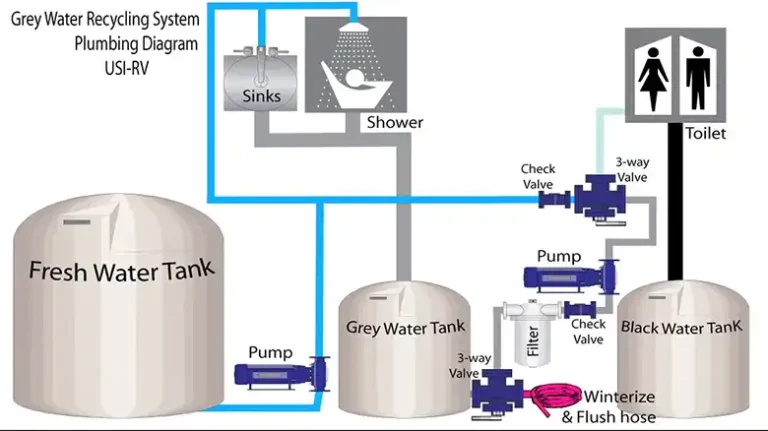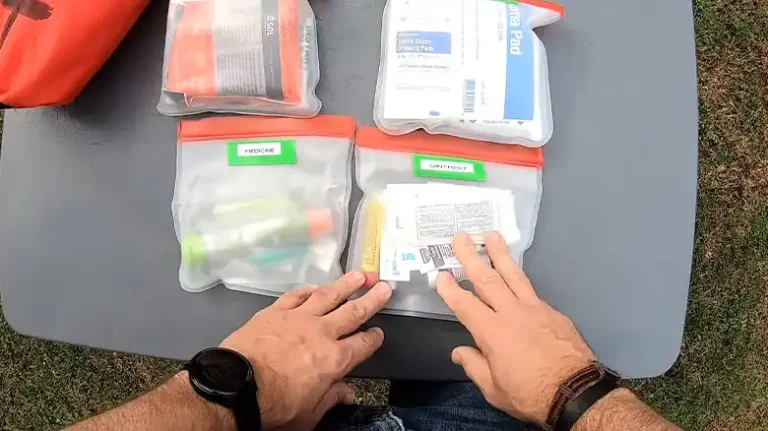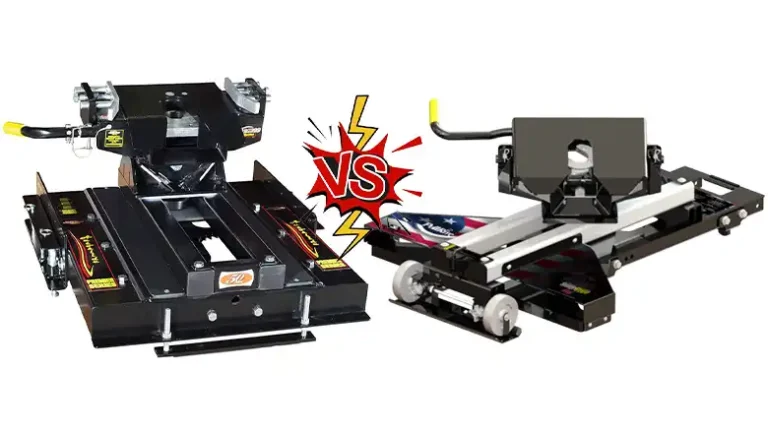Inverter and Converter Systems for RV Battery Power
RVs allow us the comforts of home while exploring the freedom of the open road. But all those appliances and gadgets need power to run. Understanding your RV’s electrical system, including inverters and converters, is key to keeping everything powered up.
Inverters transform battery DC power into standard household AC electricity to operate appliances and electronics. Converters take high-voltage shore power and step it down to safely recharge your RV battery. Using both optimizes your electrical system’s performance.
I’ll walk through the basics of RV electricity, the role of inverters and converters, how to choose the right ones for your needs, installation tips, and maintenance best practices. Prepare and get ready with this knowledge, you’ll keep your rig’s electrical heartbeat pumping strong.
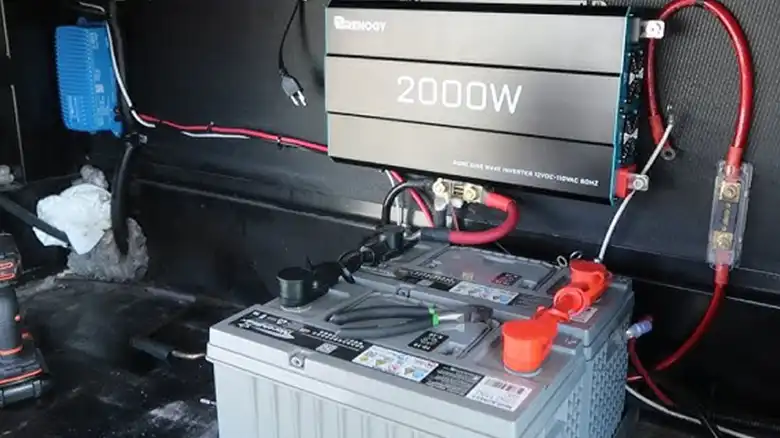
How RV Electrical Systems Work
RV electrical systems are intricate networks designed to power various appliances and devices, creating a comfortable and functional environment for travelers on the road. Central to this system is the RV battery, a key component that plays a vital role in ensuring a reliable power supply for different aspects of the vehicle.
RVs have three types of electricity:
12V DC
- Powers lights, fans, pumps, motors directly from the battery bank
- Best for things that don’t require much power
120V AC
- Standard 3-prong household outlets
- Runs microwaves, TVs, air conditioners
- Supplied by shore power or generated from an inverter
220V AC
- Used mainly for large appliances like electric heaters or dryers
- Comes from special dual-voltage external hookups
The RV battery ties everything together. It supplies the 12V DC used by many electronics and appliances directly. For 120V/220V AC equipment, it provides power to the inverter. When connected to shore power or a generator, the battery is recharged by the converter.
A comparison table and there explanation between these three types electricity of RVs:
| Aspect | 12V DC | 120V AC | 220V AC |
| Voltage Type | Direct Current (DC) | Alternating Current (AC) | Alternating Current (AC) |
| Common Usage | Lights, fans, pumps, motors | Microwaves, TVs, air conditioners | Electric heaters, dryers |
| Power Consumption | Low, suitable for electronics and small devices | Moderate to High, for larger appliances | High, used for large heating and drying appliances |
| Battery Connection | Directly from the RV battery bank | Connected through an inverter or supplied externally | Connected through an inverter or external hookup |
| Suitability for Appliances | Ideal for low-power devices | Suitable for a wide range of household appliances | Primarily used for high-power heating and drying |
| Power Source | Directly from the RV battery or battery bank | Shore power or generated from an inverter | Special dual-voltage external hookups |
| Portability | Highly portable due to lower power requirements | Limited portability, often requires external power source | Typically used in fixed installations due to high power needs |
This table highlights the distinct aspects of 12V DC, 120V AC, and 220V AC electrical systems in RVs, showcasing their voltage type, common usage, power consumption, battery connection, suitability for appliances, power source, and portability. Understanding these differences is vital for effectively managing the electrical needs of an RV.
The Role of the Battery in an RV’s Electrical System
In the RV electrical system, the battery serves as the primary source of power for numerous electronics and appliances. Specifically, RVs typically utilize a 12V DC (direct current) battery, which powers lights, fans, pumps, and motors directly from the battery bank. This low-voltage DC power is suitable for devices that don’t require much power, making it ideal for the basic necessities within an RV.
Moreover, the RV battery acts as a hub, supplying 12V DC directly to many onboard electronics and appliances. This includes interior lights, water pumps, ventilation fans, and various other devices essential for daily activities in the RV. This direct power supply from the battery allows for autonomy, enabling the RV to function independently of external power sources.
The Importance of Maintaining a Healthy RV Battery for Optimal Performance
Maintaining a healthy RV battery is paramount for optimal performance and an uninterrupted journey. The battery is not only the source of power for 12V DC devices but also plays a crucial role in supporting the broader electrical system, including the operation of inverters and converters.
1. Efficient Power Supply: A healthy RV battery ensures a consistent and efficient power supply to all connected devices. Regular maintenance, such as checking and cleaning battery terminals, helps prevent voltage drops and ensures a reliable power source for lights, fans, and other low-power appliances.
2. Inverter and Converter Support: Inverters, which convert DC to AC power, and converters, which transform shore power for battery charging, rely on the battery’s stability. A well-maintained battery contributes to the seamless operation of these systems, preventing disruptions in the supply of power to appliances requiring 120V or 220V AC.
3. Extended Battery Life: Proper care and maintenance, including regular charging and avoiding deep discharges, contribute to the longevity of the RV battery. A healthy battery can endure the demands of RV living, providing power for extended periods without deterioration in performance.
4. Prevention of Inconveniences: A malfunctioning or depleted battery can lead to unexpected inconveniences during travels. Regular checks and maintenance practices, such as monitoring electrolyte levels and keeping the battery charged, mitigate the risk of unexpected breakdowns due to a lack of power.
5. Cost-Effective Travel: The cost of replacing a worn-out battery or repairing damages resulting from neglect can be substantial. Maintaining a healthy RV battery is a cost-effective practice, ensuring that the electrical system functions optimally and reducing the need for frequent replacements.
Knowing the important role of the RV battery in the electrical system and recognizing the importance of its maintenance are essential for a trouble-free and enjoyable RV experience. By prioritizing the health of the battery, RV enthusiasts can ensure a reliable power supply for all their adventures on the road.
Inverters: Converting DC to AC Power
An inverter transforms DC electricity from your battery into the AC current needed by many appliances.
Types of inverters:
Modified sine wave: Best for most RV uses, affordable. Can produce audible noise in some electronics.
Pure sine wave: Cleaner power, no noise issues. More expensive.
When selecting an RV inverter, key factors include:
Power: Match required wattage to your needs
Peak power: Handles surge demands
Continuous power: Rate for extended operation
A comparison table for inverter types:
| Aspect | Modified Sine Wave Inverter | Pure Sine Wave Inverter |
| Waveform Type | Modified Sine Wave | Pure Sine Wave |
| Suitability for RVs | Best for most RV uses | Ideal for sensitive electronics in RVs |
| Cost | Affordable | More expensive than modified sine wave |
| Noise Issues | Can produce audible noise in some electronics | No noise issues, provides cleaner power |
| Compatibility | Compatible with most RV appliances and devices | Ideal for sensitive electronics, avoids compatibility issues |
| Power Output | May not be suitable for all types of electronic devices | Compatible with a wide range of electronic devices |
| Surge Demands | Handles surge demands adequately | Handles surge demands effectively |
| Continuous Operation | Adequate for regular RV use | Provides a stable power output for extended operation |
| Considerations for RVs | – Provides cost-effective power for general RV needs- May cause noise interference in some devices- Suitable for standard RV appliances | – Ensures clean and stable power for sensitive RV electronics- Ideal for RV enthusiasts with high-tech gadgets- More expensive but guarantees reliable performance |
| Power Quality | Good for standard RV appliances | Provides high-quality power for all RV electronics |
This table shows the key aspects of modified sine wave and pure sine wave inverters, emphasizing their suitability for RVs, cost, noise issues, compatibility, power output, surge demands, continuous operation, and specific considerations related to RV usage. Choosing the right inverter type depends on the RV owner’s power needs, budget, and the sensitivity of electronic devices onboard.
Different types of RV inverters include:
Mini inverter: Up to 1000W. For charging devices, running a laptop or TV.
Midsize inverter: 1000W – 4000W. Light refrigerator, microwave, coffee maker use.
Large inverter: Over 4000W. For multiple high-draw appliances.
Converters: Transforming Shore Power
A converter takes the high-voltage AC electricity from shore power hookups (120/220V) and lowers it to safely charge your 12V batteries at optimal amperage.
It ensures your batteries stay charged when you’re plugged into external power for extended periods. This powers the 12V DC system while sparing your batteries.
Types of converters:
Single-stage: Basic battery charging. Inexpensive but slower.
Multi-stage: More advanced charging algorithm for faster, more efficient charging over a range of conditions.
Inverter vs Converter for RV Battery System
| Aspect | Inverter | Converter |
| Function | Converts battery DC to AC power for appliances | Converts high-voltage AC shore power to DC for battery charging |
| When It’s Useful | When you need to power AC appliances without shore power or generator | When you are plugged into shore power and need to recharge batteries |
| Considerations | Peak power capacity, continuous power rating | Charging algorithm sophistication |
When You Need an Inverter
Running appliances without being plugged into shore power, using electronic devices far from electrical hookups, and operating the AC system while driving between destinations are scenarios where an inverter becomes indispensable for RV enthusiasts.
Running Appliances Without Shore Power: An inverter becomes crucial when you want to operate appliances inside your RV without relying on external power sources. This is especially relevant during off-grid adventures, allowing you to use devices like microwaves, blenders, or coffee makers without the need for a powered campsite.
Using Electronic Devices Away From Hookups: When you’re exploring nature or setting up camp in remote locations, the inverter comes into play. It enables you to power electronic devices, such as laptops, cameras, or mobile phones, ensuring you stay connected and powered even in the absence of electrical hookups.
Running AC System While Driving: While en route between destinations, the inverter enables the operation of the RV’s air conditioning system. This is particularly advantageous during hot weather, ensuring a comfortable and cool interior for passengers while on the move.
When a Converter Is More Suitable
Recharging your batteries at a powered campsite, running heavy loads like electric heaters from shore power, and avoiding battery drain when plugged in for extended periods are situations where a converter proves to be more suitable for managing your RV’s electrical needs.
Recharging Batteries at a Powered Campsite: When connected to a powered campsite, a converter takes center stage in efficiently recharging the RV battery. It transforms the incoming shore power, typically 120V or 220V AC, into 12V DC for charging the battery bank, ensuring a replenished power supply for future off-grid adventures.
Running Heavy Loads from Shore Power: For high-power consumption appliances like electric heaters, a converter is more suitable. It allows you to tap into the higher voltage supplied by shore power, meeting the demands of heavy loads without putting excessive strain on the battery or the inverter.
Avoiding Battery Drain During Extended Plugging: In scenarios where the RV is plugged in for extended periods, such as when stationary at a campsite with electrical hookups, a converter is instrumental. It not only charges the battery but also provides a continuous power source to prevent any drain, ensuring a consistent and reliable power supply.
Why It’s Better to Have Both Inverter and Converter
Having both an inverter and a converter in your RV setup provides a comprehensive and flexible electrical system, offering redundancy, simultaneous charging and inverted power use, and utilizing the battery as a power buffer for heavy loads.
Redundancy in Case of Failure: One of the primary advantages of having both systems is redundancy. In the event that one system fails, the other can seamlessly take over, minimizing disruptions and ensuring a continuous power supply for essential devices and appliances.
Simultaneous Charging and Inverted Power Use: With both an inverter and a converter, you can simultaneously charge your RV battery while using inverted power for appliances. This dual functionality allows for optimal flexibility, ensuring that power-hungry devices can be operated without compromising the charging process.
Battery as a Power Buffer for Heavy Loads: The RV battery acts as a crucial buffer when running heavy loads, such as air conditioners or electric heaters. While the converter handles high-power demands directly from shore power, the battery can provide additional power when needed, preventing overloading and ensuring a stable electrical system.
The combination of an inverter and a converter in your RV provides a versatile and reliable electrical setup, catering to a variety of scenarios and ensuring a seamless experience during your travels.
How to Choose The Right Inverter and Converter for Your RV
Follow these steps when selecting inverter and converter systems:
1. Document Your Electrical Loads: Make a list of all electronic devices and their wattages to determine your peak and continuous power needs. This determines the inverter size.
2. Calculate Total Watts: For AC appliances, multiply rated amps by 120v to get watts. This gives inverter capacity needed. Formula: P=VI (Watts)
3. Choose Reputable Brand Equipment: Buy trusted inverter and converter brands for better performance and safety. Research RV forum recommendations.
4. Consider a Multi-Stage Converter: For faster battery charging, a multi-stage converter is ideal to handle a range of conditions.
5. Ensure Sufficient Peak Power: Choose an inverter that can supply enough peak watts to surge demands of large motors or appliances starting.
6. Match Voltage of Appliances: Make sure the inverter output voltage matches appliances. Most run on household 120V AC, but some RV appliances may require 12V DC.
Will Any Inverter Work with Lithium Batteries?
No. Lithium batteries require an inverter designed to provide charging to their voltage specifications for maximum lifespan. Always pair lithium batteries with a compatible pure or modified sine wave inverter.
Installing an RV Inverter
Installing an RV inverter involves:
- Selecting appropriate mounting location, avoiding hot/wet areas
- Sizing wiring gauge to cables for rated inverter amperage
- Connecting inverter negatives directly to battery negative
- Making positive connections via a fused disconnect box
- Wiring AC output to distribution center or outlets
- Activating any automatic cooling fans and thermal protection
Carefully follow the manufacturer’s wiring diagram for optimal safety and operation.
Installing an RV Converter
Converter installation steps include:
- Selecting appropriate mounting spot, typically near batteries
- Sizing wiring gauge to shore power amp rating
- Connecting shore ground wire appropriately
- Wiring AC input to shore power hookup
- Connecting DC outputs to battery bank at regulated voltage
- Enabling any charge level selection switches
- Testing operation by verifying battery charging begins when plugged in
Again, closely following the installation manual is crucial for safe, effective operation.
Maintenance Tips for Inverters and Converters
Here are some unique maintenance tips given below:
- Monitor operation tempo and shut down during long periods of disuse.
- Check wiring connections yearly for corrosion; tighten or replace as required.
- Use a multimeter to check output voltage annually or whenever issues arise.
- For inverters, run heavy loads periodically to exercise full capacity.
- Clean surfaces gently with isopropyl alcohol to prevent dirt/grease buildup.
- Ensure adequate airflow and ventilation around units to prevent overheating.
Following preventative maintenance best practices for inverters and converters improves electrical system performance and lifespan.
People Also Ask (PAA)
Q1: Can I use a regular inverter for my lithium RV battery?
– Lithium batteries require specific charging algorithms, necessitating an inverter designed for compatibility.
Q2: Do I need both an inverter and a converter for my RV?
– Yes, having both ensures you can operate appliances and charge the battery regardless of the power source.
Q3: Can I install the inverter and converter on my own?
– Installation is possible for those familiar with electrical systems, but professional assistance is recommended for safety.
Q4: What’s the lifespan of RV batteries with proper inverter and converter use?
– Proper use and maintenance can extend the lifespan of RV batteries, potentially reaching 5-7 years.
The Sum Up
Acceptance of RV electrical systems, including the vital roles of inverters and converters, allows you to make the most of your battery power on the go. Matching rated capacities to your usage needs, choosing quality components, proper installation, and regular maintenance keeps your rig running smoothly across endless miles.



